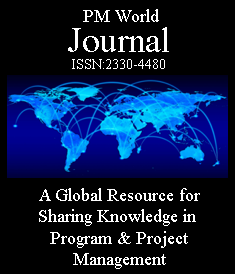to Optimize Project Planning, Scheduling,
and Risk Assessment
CASE STUDY
By Ing. Massimoluigi Casinelli, CCP
Formia, Italy
Abstract
This paper presents a case study of a metro project in which float mapping was applied to a CPM-based schedule to improve planning, scheduling, and risk assessment. Due to the project’s complexity and the contractual requirements—which included a preliminary Quantitative Schedule Risk Analysis (QSRA) and the identification of float opportunities—I developed and proposed a custom float mapping approach as the project controls consultant to the contractor consortium.
While QSRA provided a probabilistic assessment of schedule reliability, float mapping offered a clearer understanding of the execution plan and helped focus attention on risks impacting key milestones. Float mapping is an essential technique for effective float management—an increasingly relevant topic in modern project planning and controls.
By mapping float values across the CPM logic network, project teams gain visibility into the distribution of total and free float across critical and sub-critical paths. This information enables better decision-making, proactive risk mitigation, and resource prioritization during both planning and execution phases. Associating float values with key milestones and assigning levels of criticality allows for a structured, risk-informed approach to project delivery.
Introduction
The programme (project schedule) is not fixed on the rock and critical path is doomed to change, due to various causes. Managing longest, critical and sub-critical paths is a matter of risk management; technical speaking, it requires the so called “float management” (Total and Free Float, as minimum), which, in turn, depends upon many factors included contract specifications and terms, nature of project (which dictates the hard-logic sequence of works), project organization and procurement strategy adopted, number and roles of key Stakeholders, which are all elements that can constrain the sequence of works.
“Float management” becomes the way by which the project manager can focus on the evolution of longest, critical and sub-critical paths. Obviously, you need a robust CPM network which represents the project and a set of project planning and scheduling procedures to guarantee that schedule update is performed properly, apart the expertise of the project manager and project team members, who all need a good understanding of planning and scheduling as well as of its relationship with risk management.
Float represents both a margin and an opportunity within a project schedule. It is the total amount of time a task can be delayed without affecting the overall project completion date or any other contractual milestone. This flexibility makes float a valuable resource for mitigating delays, optimizing project delivery, and assessing risks and opportunities.
Importance of Float Management and Ownership
Float management is the systematic process of planning, monitoring, and controlling float throughout a project lifecycle. Effective float management involves:
More…
To read entire article, click here
How to cite this paper: Casinelli, M. (2025). Float Mapping: An Effective Tool to Optimize Project Planning, Scheduling, and Risk Assessment; PM World Journal, Vol. XIV, Issue V, May. Available online at https://pmworldlibrary.net/wp-content/uploads/2025/05/pmwj152-May2025-Casinelli-Float-Mapping-An-Effective-Tool-case-study-2.pdf
About the Author

Massimoluigi Casinelli
Formia, Italy
![]()
Massimoluigi Casinelli, CCP is a senior consultant in project planning and controls with over 30 years of experience supporting international engineering and construction companies on complex infrastructure projects. His expertise covers highways, railways, civil and industrial buildings, air terminals, hospitals, and specific contributions in the energy sector. He specializes in setting up and implementing project management systems to measure costs, progress, and performance, mitigate delays, and support claims and risk mitigation. He is the author of international publications, including articles in the Cost Engineering Journal (on schedule delays and concurrent delay analysis) and in the PM World Journal (on EVM performance evaluation in complex projects).
He can be contacted at m.casinelli@casinelli.net









